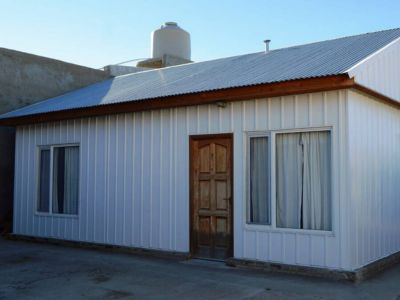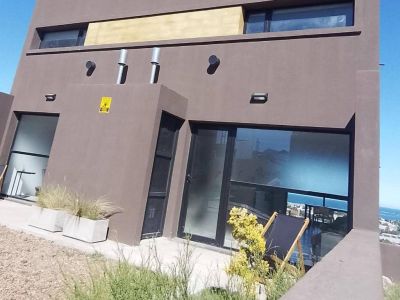
The logs and pine nuts found correspond to a monkey-puzzle tree species with similar features to those upholstering the mountains of Neuquén and they are the object of constant scientific research.
At
Puerto Deseado, it is possible to get away from the coast towards the mountain range area and set foot on the most important fossil site in Argentina: Jaramillo Petrified Forest. Several stops can be made on the way to appreciate the attractions of the region. As soon as the shuttle set out, our guide started to describe the interesting details of what we were about to see. He told us that it is referred to as a forest because the petrified specimens found there used to be conifers from the Jurassic Period and they have remained in the same spot where they once lived. This forest emerged 150 million years ago amidst weather conditions quite different from today's. In those days, the Andes Mountain Range did not exist and the winds from the Pacific contributed their humidity to Patagonian ground. Later on, as a result of volcanic activity, the mountain system emerged and the wildlife vanished under the volcanic ash. We moved towards the petrified forest and 25 kilometers before our destination, we came across
estancia La Paloma, where we made a stop to enjoy a picnic. It offers services and fire pits. We still had to cover the last stretch on the gravel road. Our journey became more slowly but wonderful.

Eventually, we reached the paleontological site and a park ranger specialized in geology gave us all the information necessary for us to understand the petrification process. 'How shall I explain with simple words why the logs we are looking at have that hue and that structure? Well, after becoming covered by volcanic ash, the emerging silicon salts penetrated the vegetable tissue with the help of the rain and gave origin to a mineral inorganic matter in each log, in each tree,' he said. 'The emergence of the mountain range, the invasion of the sea water and glaciation, in combination with the strong winds shaped this area and left the trees turned into rock in the open air,' he continued. As we had some photographs taken by those thick logs, we could not stop thinking about the forces of nature and everything that happened before the first geologists reached this area. It is said that it was 1925 when they made contact with those huge logs. Some are still standing and others are lying on the ground in perfect state of preservation. From that year on, countless scholars came along with the intention of preserving this significant natural phenomenon. It was not until May, 1954 that the national state declared it Natural Monument. The reserve was created and everybody became aware of this geologic wonder. Fossil pine-nuts have been found which give testimony that their structure was essentially the same to that of present specimens of this fruit. We were amazed by the fact that some logs measured almost 30 meters of length and 2 meters of diameter. We went as close to them as possible, as the tour is very strict and visitors are not supposed to pick up anything from the floor. We could contemplate these rock giants, imagine their hardness and be surprised by the fact that these tree fossils were not moved by the wind or other natural actions and that they remain at sight for everyone to admire.






















